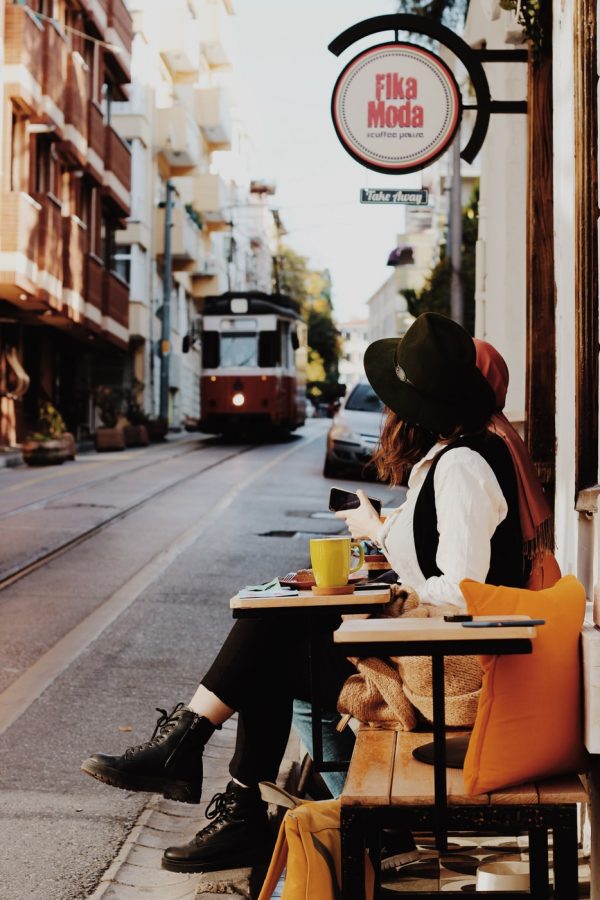
Suddenly everything has changed. As if somebody has pushed the pause button of mankind. Our unstoppable need for more, faster and further is halted by an invisible force. This affects the way we buy, prepare, eat and experience our food severely. For food companies important to anticipate nearby and future consumer needs. Therefore we developed a model of 4 stages and the changing meaning of food through time. For a complete story, please contact us for our (digital) presentation.
1. First shock of the crisis
Right at the beginning of the crisis, our main concern is to secure our base. Extra stock, few and fast shopping trips to be sure that we can go a few weeks ahead. No frivolity, exoticism or experience at all. Shopping is pure necessity. A good weekly planning and shopping list are essential. Not the time to get creative and look for that special ingredient or surprising recipe. Simultaneously, we (re-)discover new places and new ways to gather our food and drink. The small evening shop around the corner, a craft bakery, the often-overlooked frozen aisle in your supermarket or that online meal subscription. Certainty and security, that’s what it’s all about these days. Multi-purpose ingredients, simple recipes and practical considerations such as shelf life will dominate kitchens.
2. At home quarantine
Then comes a period in which we regain confidence that the food supply can cope this crisis, but that we are isolated at home due to governmental restrictions. Our world is getting smaller and closer. We have more time than normal to spend in our homes. It is mandatory ‘Cocooning’. And food becomes a welcome break from the day. During these days we bake cookies with the children, make a slow stew with ingredients from those well stocked kitchen cabinets, have a virtual aperitif with distant friends or a lazy, Sunday brunch. Finally, we have time to try that fermenting kit or to revitalize the herb garden or vegetable garden. We buy some tasty treats to comfort us. We celebrate parties ‘small’ within the family or invite some other guests digitally. Online shopping, also in food, is another way to spend time. And hopefully more and more people will discover the great initiatives from small and local food entrepreneurs and support them in this crisis to continue their food businesses. Like https://www.supportlocals.nl en http://www.localheroesonline.com

Our trend millennial Silvia Naber is spending her extra time at home by making Kimchi with her ROTPOT.
3. Recovery
When the restrictions can become looser. We will slowly but surely begin to explore our new regained freedom. In the beginning cautious and insecure. But intensely enjoying that first, re-acquainted cup of coffee on a restaurant terrace in the sun. Shared dining, finger foods and open buffets may find that they are not the preferable formats directly. But as confidence grows, that the virus has been defeated, we will celebrate the regained freedom. Friends who are allowed to come for dinner again, a first restaurant visit, and catching up earlier (birthday) parties. You bet we will enjoy that! What was once normal, we will appreciate more than ever. People will start celebrating and compensate for what we have missed. With vivid tables full of friends and family, good food and … a bottle of Champaign.

The first coffee with a friend on a terrace will feel like a festive moment of regained freedom.
4. The new normal
Eventually we will slowly but surely go back to normal. Or to be more precise, the new normal. Because simply going back in time, never happens. The crisis has brought us pain and sorrow but also new habits, knowledge, insights and hopefully wisdom. We will make a leap in technology. Especially in the field of remote working, e-commerce, delivery and health. Some measurement will disappear, others will (partly) remain in place. Governments, companies and individuals will consider how they can better defend themselves in the future. Food hygiene comes in a new light and packaging will regain importance in terms of a protective jacket. Many consumers will structurally manage their pantry with more care. Companies will find a new balance in retail and food service. Local food supplies will get new and vital significance. Online delivery and presence will be a permanent strategic pillar for most restaurants. The Chinese government will surely reconsider the future of markets with live animals. And the dominant innovation theme ‘vega(n)’ will get an extra dimension, because many infectious diseases start at the interface between humans and livestock. It is highly likely that the Corona crisis will evoke an economical downfall and hit consumers in their wallets. And although people will spend more consciously, many food products are often the luxury they can still afford. Also known as the lipstick effect (most people will not buy a Chanel dress, but can afford a Chanel Lipstick).
Time and speed
The pace at which we travel through the different phases will depend on how quickly we get the disease under control. Whether we move to the outer circle in one straight line or that we will be confronted with fallbacks. There will also be differences in tempo between countries, companies and individuals how quickly they will build trust and courage to act upon.
Do you think this it’s interesting to understand what these 4 phases will mean for your food company in your specific market? Then contact Marleen or Marielle for a more in-depth presentation or food marketing strategy. Or mail us for our free planning sheet for innovation/NPD planning in Corona times.

Mail us for your free copy of this food innovation/ NPD planning sheet.
Sources:
Model: The Corona Effect in Food by Food by Design
Image Rotpot: Silvia Naber
Image coffee: Hatice Yardim on unsplah.com
